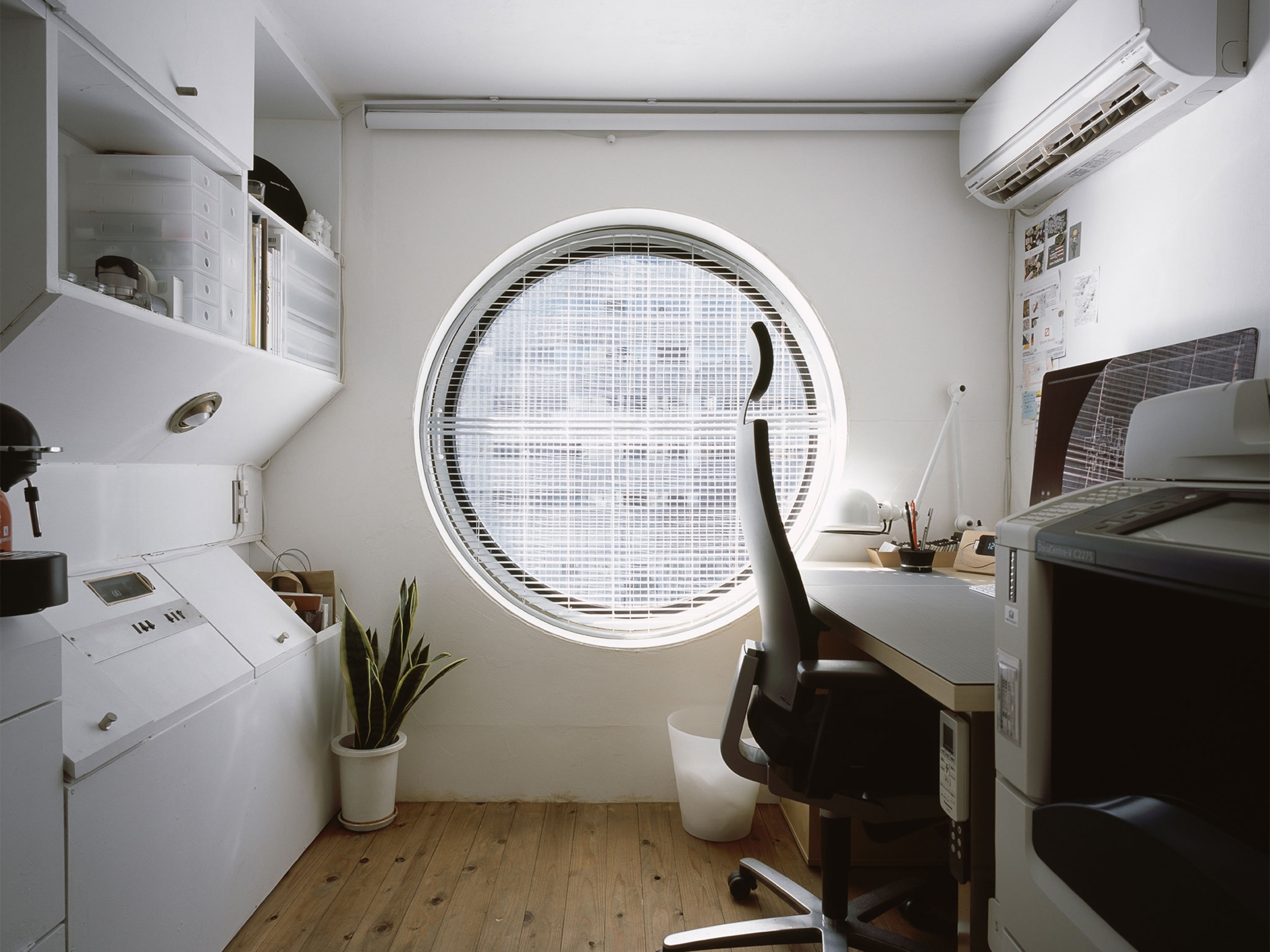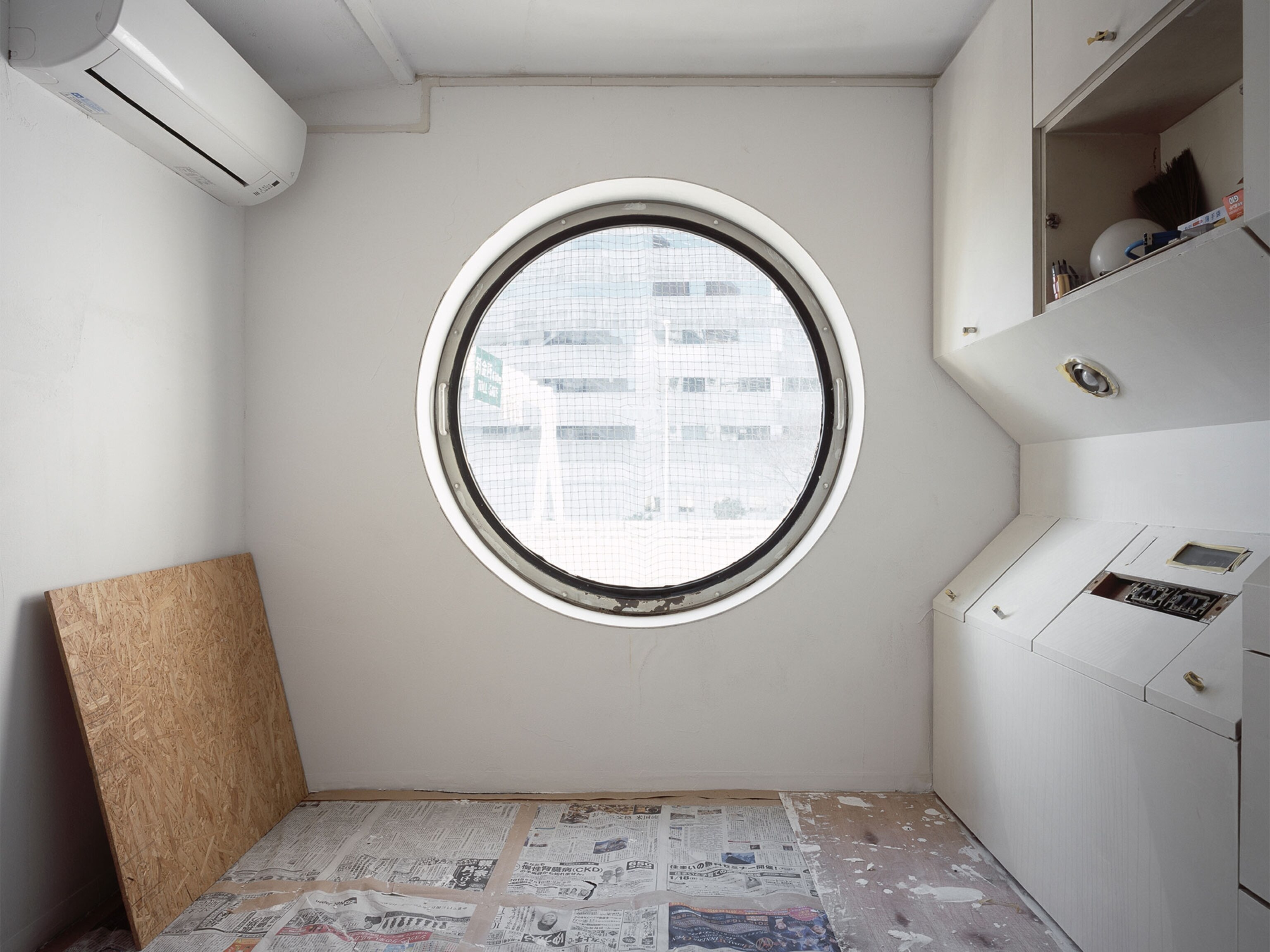
Pictures Reveal Life Inside Tiny Futuristic Cubes
Built in 1972, the Nakagin Capsule Tower was the benchmark of Japan’s post-war economic boom. Now, its future is uncertain.
On the outskirts of Tokyo’s posh Ginza district stands Nakagin Capsule Tower, an unusual structure that once held Japan’s vision for the future.
The building was designed by Kisho Kurokawa, a pioneer of the “metabolist” architectural ambition—a 1960’s movement that emphasized the idea of buildings as dynamic and adaptable to a fast-paced, continually evolving cityscape of the future.




















From the outside, the tower looks like a stack of laundry machines. It is comprised of two concrete cores, 11 and 13 stories high, onto which are attached “removeable” cubes. Each cube, measuring 107 square feet, was prefabricated in a factory and then attached to the cores using 4 high-tension bolts. These capsule rooms, as they are called, are furnished with basic appliances and a bathroom the size of an airplane lavatory.
The building was built in 1972 in just 30 days. Kurokawa envisioned this building as the dawn of a new age.
Instead, Nakagin Capsule Tower became a utopia never realized. The capsules, planned for a 25-year lifespan, proved too costly to replace. The tower now stands as an anachronism in the midst of the more practical buildings that have sprung up around it.
(See "Inside Paris's Forgotten Utopia.")
When Kurokawa passed away in 2007, residents tired of the tower’s crumbling concrete and leaking pipes voted to tear down his masterpiece and replace it with a conventional apartment building, a plan which was halted by the 2008 stock market crash.
Photographer Noritaka Minami began chronicling the life and fate of the Nakagin Tower in 2010. In the next seven years, he returned to the building nearly 10 times. “Each time I visit the building, I learn something both about the architecture and the residents,” he says.
Some capsule owners have moved out or converted their rooms into offices, while others have chosen to renovate and remain in the one-of-a-kind dwelling.
Minami avoided photographing the tenants directly, preferring to have their presence communicated through their objects. “[The room] functions as a container of people's identity, personal interest, hobbies and taste.”
With the Summer Olympics coming to Tokyo in 2020, development has been reignited development across the city as well as the debate about the historic tower’s future.
Minami hopes the tower will be preserved as a symbol of a movement whose concepts for efficient urban living still hold relevance today. It is also a reminder of paths not taken and a future that never arrived.
“There is not that much emphasis on the preservation of modern architecture in Japan,” Minami explains. “It’s important [that the tower] can continue to stay there instead of going through the usual routine of being demolished for the sake of economic progress.”
Related Topics
You May Also Like
Go Further
Animals
- This ‘saber-toothed’ salmon wasn’t quite what we thoughtThis ‘saber-toothed’ salmon wasn’t quite what we thought
- Why this rhino-zebra friendship makes perfect senseWhy this rhino-zebra friendship makes perfect sense
- When did bioluminescence evolve? It’s older than we thought.When did bioluminescence evolve? It’s older than we thought.
- Soy, skim … spider. Are any of these technically milk?Soy, skim … spider. Are any of these technically milk?
- This pristine piece of the Amazon shows nature’s resilienceThis pristine piece of the Amazon shows nature’s resilience
Environment
- This pristine piece of the Amazon shows nature’s resilienceThis pristine piece of the Amazon shows nature’s resilience
- Listen to 30 years of climate change transformed into haunting musicListen to 30 years of climate change transformed into haunting music
- This ancient society tried to stop El Niño—with child sacrificeThis ancient society tried to stop El Niño—with child sacrifice
- U.S. plans to clean its drinking water. What does that mean?U.S. plans to clean its drinking water. What does that mean?
History & Culture
- Séances at the White House? Why these first ladies turned to the occultSéances at the White House? Why these first ladies turned to the occult
- Gambling is everywhere now. When is that a problem?Gambling is everywhere now. When is that a problem?
- Beauty is pain—at least it was in 17th-century SpainBeauty is pain—at least it was in 17th-century Spain
- The real spies who inspired ‘The Ministry of Ungentlemanly Warfare’The real spies who inspired ‘The Ministry of Ungentlemanly Warfare’
- Heard of Zoroastrianism? The religion still has fervent followersHeard of Zoroastrianism? The religion still has fervent followers
Science
- Here's how astronomers found one of the rarest phenomenons in spaceHere's how astronomers found one of the rarest phenomenons in space
- Not an extrovert or introvert? There’s a word for that.Not an extrovert or introvert? There’s a word for that.
- NASA has a plan to clean up space junk—but is going green enough?NASA has a plan to clean up space junk—but is going green enough?
- Soy, skim … spider. Are any of these technically milk?Soy, skim … spider. Are any of these technically milk?
- Can aspirin help protect against colorectal cancers?Can aspirin help protect against colorectal cancers?
Travel
- What it's like to hike the Camino del Mayab in MexicoWhat it's like to hike the Camino del Mayab in Mexico
- Follow in the footsteps of Robin Hood in Sherwood ForestFollow in the footsteps of Robin Hood in Sherwood Forest
- This chef is taking Indian cuisine in a bold new directionThis chef is taking Indian cuisine in a bold new direction
- On the path of Latin America's greatest wildlife migrationOn the path of Latin America's greatest wildlife migration
- Everything you need to know about Everglades National ParkEverything you need to know about Everglades National Park




